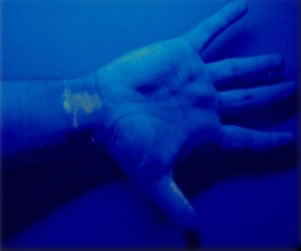
Eve Frances Lorgen © 2003 Fluorescence – general description Compounds emitting fluorescence are called fluorophores or fluorochromes. When a fluorophore absorbs light, energy is taken up for the excitation of electrons to higher energy states. The process of absorption is rapid and is immediately followed by a return to lower energy states, which is accompanied by an emission of light, observed as fluorescence. Absorption and emission of light of various fluorophores may take place at different regions of the light spectrum. For the commonly used fluorophore, fluorescein (FITC), used in biotechnology, its excitation wavelength is 490 nm – the blue region of the visible spectrum and emits fluorescence at 520 nm, which is in the green-yellow region. FITC is used as a label for […] Read More